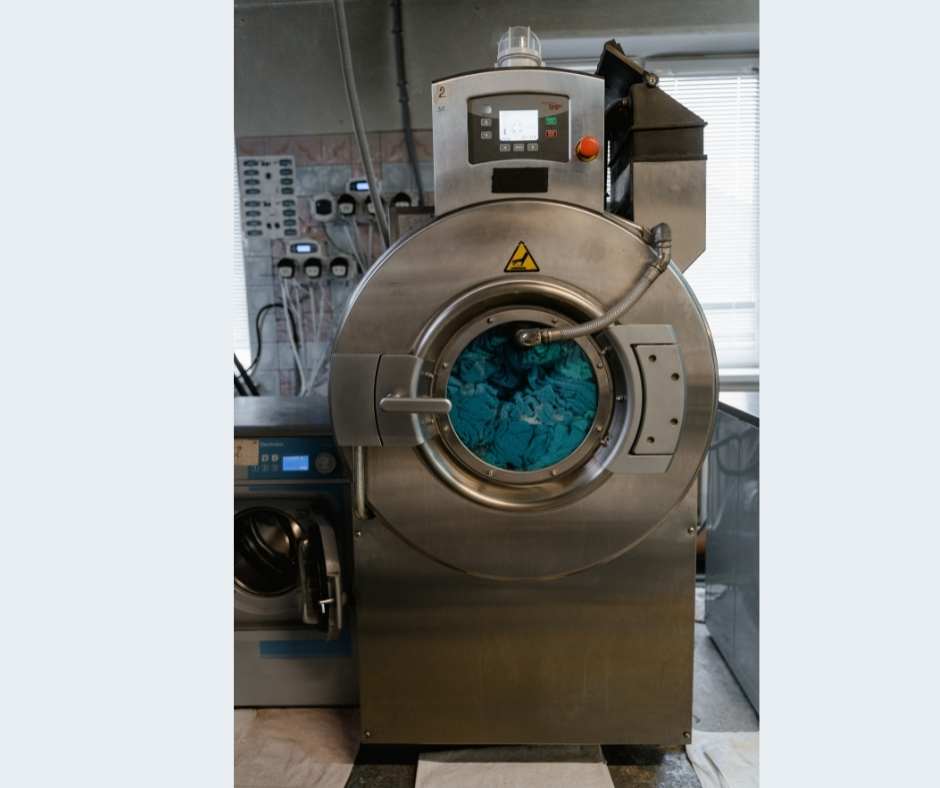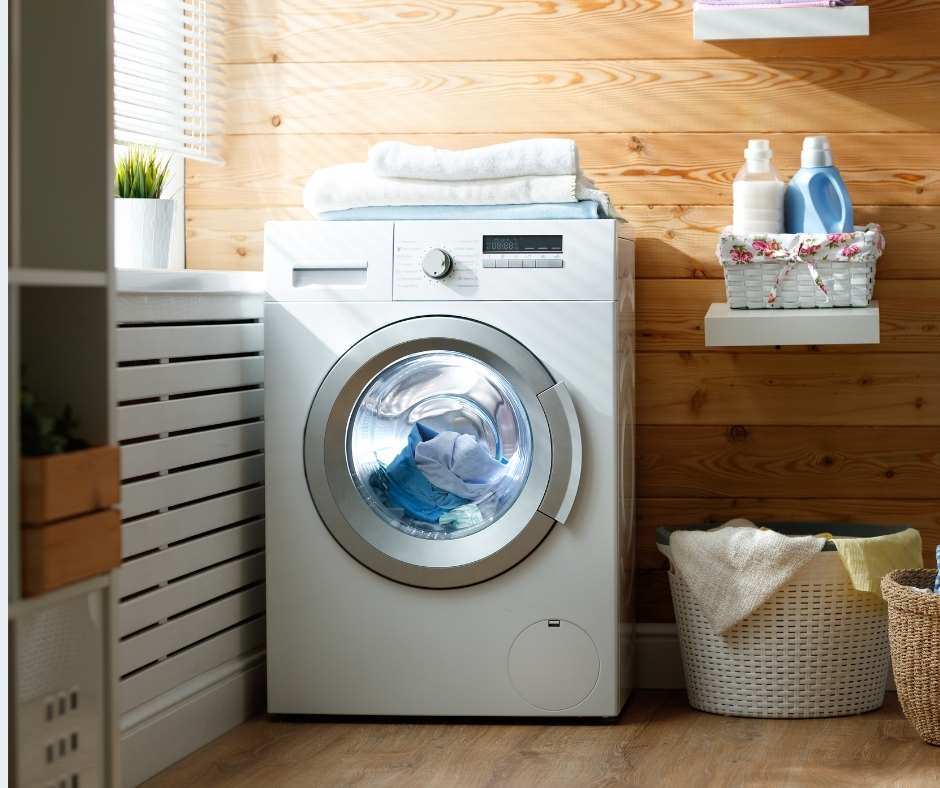Washing machines weigh an average of 170 pounds, while dryers weigh 124 pounds. The weight of these appliances, on the other hand, varies greatly depending on the type, capacity, features, and brand. Smal-load washers can be as light as 99 pounds, while extra-large washers might be as heavy as 300 pounds. For dryers, the range is smaller. Small dryers can be as light as 100 pounds, whereas larger dryers can be as heavy as 170 pounds.
Why Are Washing Machines So Heavy?

A lot of homeowners question why the dryer washing machines are so heavy. The answer is that they’re heavier because of the extra water and detergent that’s needed for homeowners to clean their clothes properly. The heavyweight prevents the machine from moving around during regular use, and long-term use. Dryer washing machines are so heavy to keep the clothes in the drum because the drum is spinning.
Since the invention of the clothes dryer, it has been a common notion that dryers are heavier than washers to compensate for the weight of clothes hitting and moving around inside the drum.
It is now known that the average dryer is roughly 60 pounds and weighs more because it is made with thicker metal and stronger components to withstand the heat generated by drying clothes.
Dryers, unlike their counterparts, werehers, are heavier than washers. This is because dryers need to be able to withstand the power of the engine and handle different weight loads of clothes. The heavier weight means more stability and less shaking.
They also need to be heavy in order for them to get hot enough, which is necessary in order to kill germs and bacteria that might lead to illness. This hotter temperature though is what costs a little more on your energy bill.
Preparing to Move Your Dryer
- Determine the size of your new space
- Plan where to place your dryer
- Plan where to place your washer
- Figure out which fittings you’ll need to install for water and electricity
- Clean the area you’re planning on placing your appliances in
- Move your appliances
Dryer Washing Machine Capacity
Dryer washing machines are often found in apartments. They are especially useful for their smaller size and the fact that they don’t require a water hookup. However, dryer washing machines have been found to also be more expensive than regular washers.
Dryer washers have a capacity of about 2.45 cubic feet When it comes to washing clothes, some consumers are loyal to the old-fashioned way of doing things.
They would rather hand-wash their clothes or take them to a laundromat than invest in a washer and dryer set. Other people don’t mind the extra time needed to wash clothes by hand, but they feel that it’s not worth the cost savings if they’re also going to buy an expensive new dryer.
How to Disconnect the Washer and Dryer?
If you want to disconnect and move any type of clothes washer, then it’s easy if following a few steps that are simple.
You will need a small bucket, old rags to absorb water, an appliance dolly or a power washer if you have the machine with you and do not want to go back for it because of its weight. If someone is helping you then they can use these items as well.
Step 1: Turn off the power source
To disconnect power from the washer and dryer, turn off the power source and remove it from the wall.
If necessary, unplug the appliance from an outlet or remove the power cord from the receptacle. Disconnecting the appliance will remove it as a potential fire hazard and make any future repairs easier.
Step 2: Move the appliance to the side.
Just as you would with any appliance, it is important to disconnect your washer and dryer before moving it.
Moving an appliance without unplugging the washer and dryer can result in water spilling out of the machine and causing a hazardous situation. Read on for information on how to properly disconnect your washer and dryer before moving them.
Many homeowners today have a washer and dryer in their homes. With these appliances, you can wash your clothes and then hang them up to dry on the clothesline, but has this become less practical as our laundry load increases.
Step 3: Disconnect the water supply from the washer.
The water supply is disconnected from the washer to prevent damage to the washer and clothes. Before disconnecting, turn off the water supply to the washer.
Use a basin or bucket to catch any residual water that may be in the pipe for use later. The hot and cold water pipes are disconnected by shutting off individual shutoff valves on each pipe.
Disconnect both pipes if you’re installing a new washer, but only disconnect one if replacing an old one. Without any water, there is no real danger of shock even if an electrical current is present. If you want to be extra safe, turn off the electricity at the breaker before you begin disconnecting anything.
Step 4: Unplug the connection leading to the washer.
Many people have a washer and dryer in their home that are connected. The washer will drain into the dryer, which will use the water to spin clothes and make them dry.
This is a great way to save time and energy, but if there is a power outage, it can lead to other problems. For example, if you take your load of wet clothes out of the washer and put them in the dryer while power is out, they will not dry.
Step 5: Move the appliance to the other side.
Having a home without laundry machines is unheard of, and for good reason. Not only can it be difficult to find someone willing to do your laundry for you, but the process often takes hours and doesn’t come cheap.
If you want to save time and money and avoid lugging your laundry down flights of stairs then you should consider installing them in the basement. As our home life becomes more complex, problems with appliances are bound to arise.
It is common for the washer and the dryer to be in close proximity, but they should be moved to make it easier to disconnect them. Once disconnected, appliance maintenance can be completed.
Step 6: Disconnect the air supply from the washer.
The act of disconnecting the air supply from the washer to Disconnect the Washer and Dryer is not an easy one.
It can be dangerous if you do not know what you are doing. You should always turn off the water first before disconnecting the hoses.
Step 7: Unplug the connection leading to the washer.
When the washer and dryer are in close proximity, they can compete for hot water. This means that one appliance is likely to run out of hot water before the other, which can lead to major inconveniences with your laundry routine.
To avoid this problem, unplug the connection leading to the washer and disconnect the two appliances from each other.
In conclusion, everyone needs to know how much their dryer weighs so they can properly take care of it. This article’s purpose is to show the importance of knowing the weight of your dryer, and how it can affect your ability to move it.

It is important to have a dryer in the home. Not only are they good for drying clothes, but they also help to remove unpleasant smells from clothing that can be caused by bacteria.

